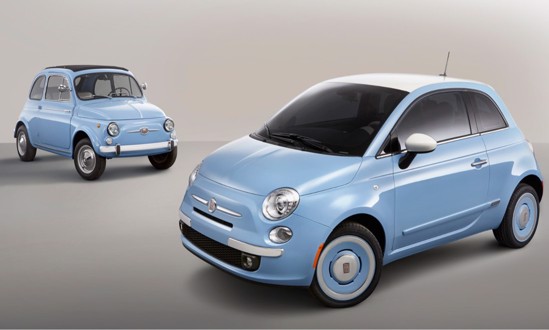
The brakes of the future: Brief history of cars
Part 1. The cars of yesterday, today and tomorrow
How do modern-day cars differ from those of the past and what are the changes in store? How have these transformations changed and how will they affect the braking system and its components? We will be answering these questions, by analysing in this first part how cars have evolved up till the present day, and then considering, in part two of "The Brakes of the future”, the main trends that will contribute towards forming the car of the future, in particular:
- environmental friendliness
- safety
- mobility
In part three, we will be analysing in detail the effects of these transformations on the braking system and on the spare parts market in general.
From the cars of the past to the modern day ones: what’s changed?
Cars have undergone a multitude of changes over the last few decades, but as we will see shortly, their principal characteristics have remained the same. Let’s take for instance the VW Golf, which came onto the market in 1975, more than 45 years ago.
If we analyse five similar petrol engine models, from the 1975 Golf I to the 2012 Golf VII (see table 1), we can see that, over the years, both the vehicle weight and its top speed have increased, and, consequently, so has its engine power. These characteristics have undergone similar transformations in the majority of cars over recent decades.

The weight has increased for various reasons, particularly the increased size of cars and the greater quantity of safety devices on board, bars in the doors and multiple air-bags, as well as the presence of electronic devices.
The increased weight and speed have obviously led to the need to use increasingly powerful braking systems, that dissipate the kinetic energy due to the increased level of heat produced during braking.
Nevertheless, it should be noted that, in the 130 years since it was invented, the car has remained essentially unchanged in its principal components:
- brain: the driver
- heart: an internal combustion engine
- legs: the wheels.
The cars of the future: principal trends
The future of the car, according to the majority of experts, will be affected by three main trends:
- environmental sustainability: reduction in emissions and the electrification of powertrains
- safety: increasingly advanced driver assistance systems
- mobility: a new way of enjoying the relationship with the car.
This last aspect depends on the pay-per-use mode which the new generations tend to prefer: Generation Y is in fact not interested in owning a car, but prefers using an App to choose the most appropriate means of transport for their momentary needs on a case-by-case basis.
While environmental sustainability, safety and mobility are set to shape the future of the car, it is evident that the components will undergo significant changes too, and these include the braking system, which we will be covering in part two.
Er eitthvað annað sem þú vildir spyrja um?
Hafa samband við tækniaðstoð Brembo. Tæknimenn okkar munu hafa samband við þig eins fljótt og auðið er!
Hvernig getum við aðstoðað þig?







